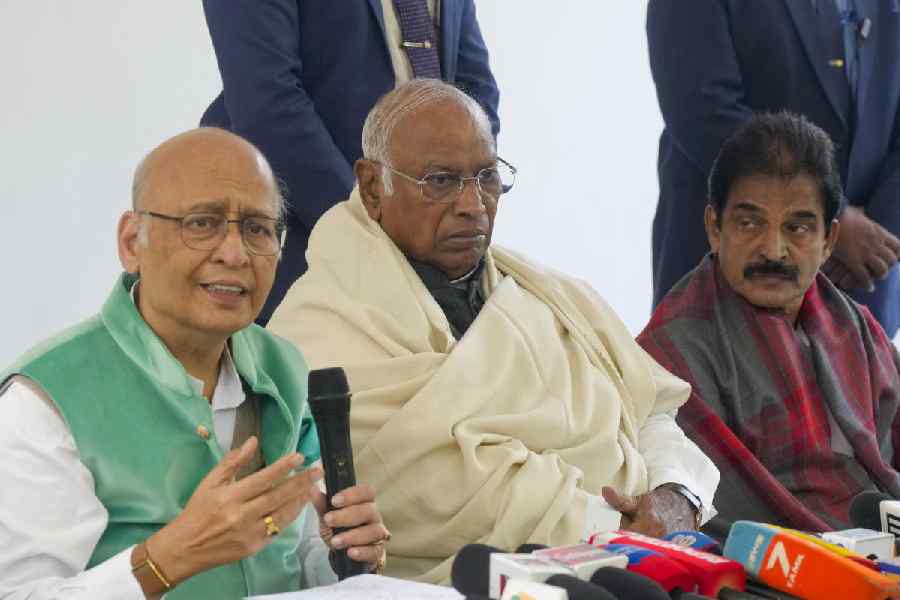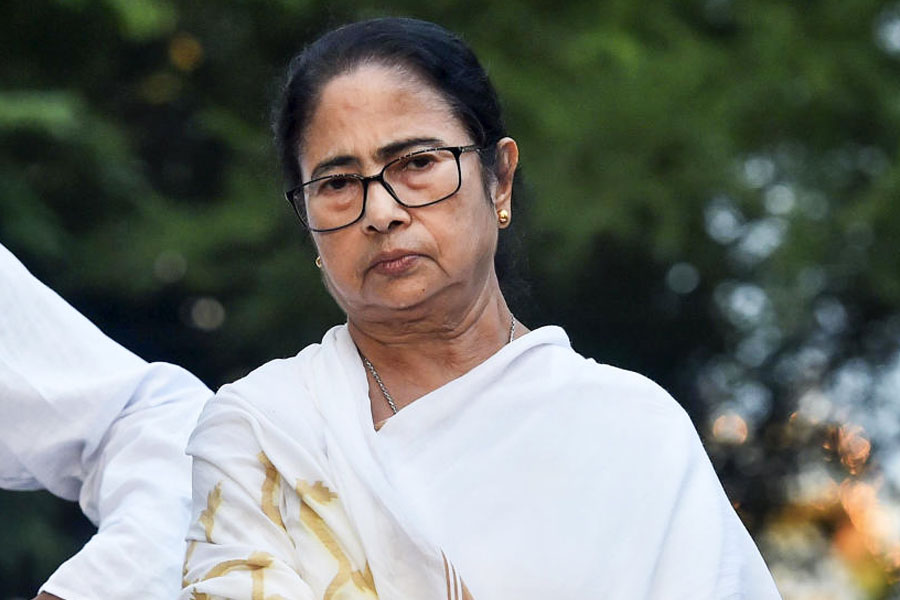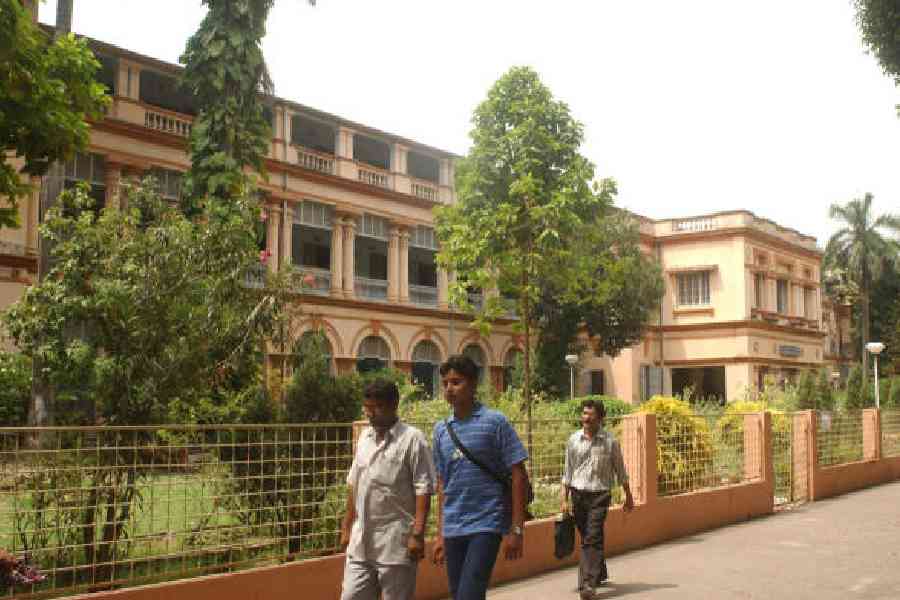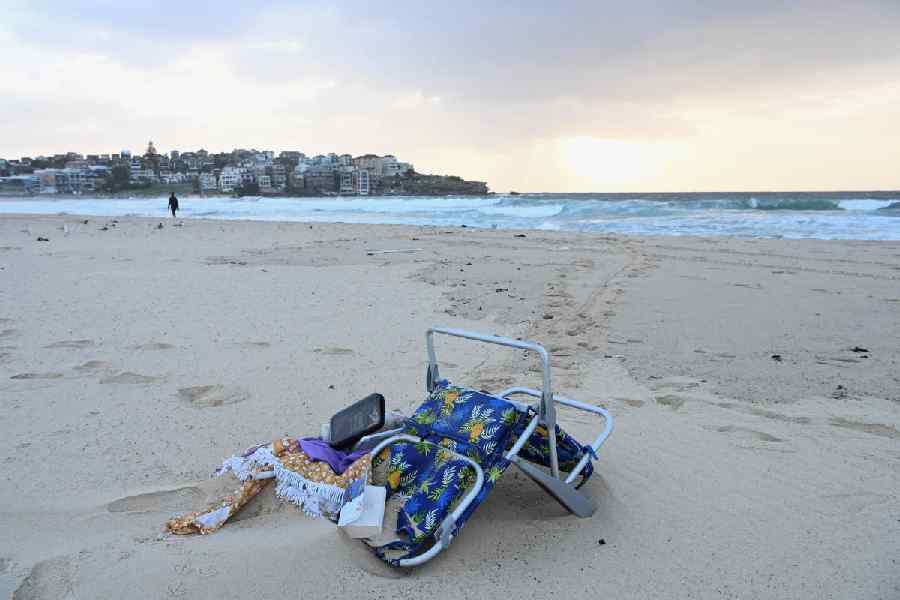 |
| Far ahead |
It is hard for an Indian of my generation to call Calcutta Kolkata, and harder still for him to refer to Trivandrum as Thiruvananthapuram. Bengal’s capital I know well, having spent five years there as a young man. But I recently made my first trip to Kerala’s capital. This is a charming town of old tiled houses and curving roads, situated at the southern edge of the state. Trivandrum was once the capital of the princely state of Travancore-Cochin, whose ruling dynasty, the Varmas, had a marked talent for the arts. (Raja Ravi Varma belonged to the family, while their wooden palace in Padmanabhapura is one of the wonders of late medieval architecture.)
My first visit to Kerala, to the industrial centre of Cochin, was at the invitation of that remarkable peoples’ science group, the Kerala Sastra Sahitya Parishad. KSSP is a non-profit organization that runs itself through the proceeds of the books and pamphlets it publishes. My second visit, to the village of Thiruvala, was to attend a meeting convened by the followers of the liberation theologian, M.M. Thomas. The present visit to Trivandrum was at the invitation of DC Books, who are the state’s largest commercial publishing house, and also own a chain of bookshops. Thus on each of the three occasions I have been in Kerala I was placed in the midst of writers and intellectuals, arguing, arguing, arguing. It is hardly surprising that I was reminded of my days as a doctoral student in Calcutta.
As in Bengal, in Kerala too books and ideas are taken very seriously indeed. These are probably the only two bilingual intellectual cultures in India. In Trivandrum I met Paul Zachariah, a masterful short story writer in Malayalam who also writes well crafted essays in English. I also met the veteran historian M.G.S. Narayanan, who publishes his research papers in English but is also a prolific contributor to the Malayalam press. Like his Calcutta counterpart, the Trivandrum writer and scholar lives simultaneously in his locality and in the world. He knows his Vallathol and his Basheer, but also his Foucault and his Sartre. (As in Bengal, there is here a noticeable enthusiasm for French thinkers as opposed to Anglo-Saxon ones.)
Both states also have an enduring tradition of art cinema. The cinema opposite my hotel was showing the latest film of Adoor Gopalakrishnan, an exploration of late colonial India through the eyes of a hangman. In the Hindi cinema, the days of Shyam Benegal and company are a fading memory. In Tamil and Telugu films the bottom line has always ruled. But in Kerala, like in Bengal, there is still space for the innovative director who makes films which provoke but do not necessarily sell.
In both states, thinkers and creative artists divide themselves into rival camps. Thus Paul Zachariah describes himself as a “man of the left”. The historian M.G.S. Narayanan, on the other hand, is best described as a man of the “anti-left”. Of course, there are various shades of opinion within each camp, but the fundamental axis of division remains the relation to Marxism. For one set of intellectuals, this philosophy is both enlightening and emancipatory; for the other, it is constraining and dogmatic.
This polarization is a consequence of the hegemonic role in both states of the Communist Party. The undivided Communist Party of India came to office in Kerala in 1957; over the next forty-five years it has been in and out of office. The state has a stable two-front system, one alliance led by the Communist Party of India (Marxists), the other by the Congress. In West Bengal, the communists first tasted power only in the late Sixties. But from 1977 they have never been in opposition.
In both Kerala and West Bengal the communists have tried not merely to define the terms of cultural debate, but also to control it. It is now widely recognized that senior appointments in West Bengal’s universities are decided upon by Alimuddin Street. In Kerala the party headquarters, the A.K.G. Centre in Trivandrum, plays a very similar role. However, its influence is limited in comparison, if only because in every alternate election the communists are thrown out of office.
The vigour and vitality of intellectual life, its effortless bilingualism, the salience of the left — all these make Kerala akin to Bengal. One could add other similarities, such as the absence of communal strife, or, on the negative side, the power of the trade unions which has led in both states to a flight of capital. But there are also some fundamental areas of divergence. One is social composition. While both states have a large Muslim population, Kerala also has a wealthy and influential Christian minority. The other is social development — while Kerala has an outstanding record in education and health, Bengal has fared rather poorly in this regard.
“Success has many fathers,” said John F. Kennedy. Thus angels of all kinds have rushed in to claim credit for the “Kerala miracle”: for the fact that the state has almost 100 per cent of its female population literate, the fact that its population growth rate is the lowest in India, the fact that its health facilities are better than in the United States of America. The Travancore ruling family liked to say that it devoted more energies to education than other Indian princes, by, for instance, sending women doctors and nurses abroad for training. The dominant caste of the Nairs is not shy of staking its claim either. The Nairs are matrilineal, with women inheriting and running family properties; this is said to have made it easier to send little girls to schools. Then there are the Christian missionaries, who believe that they brought an enlightened modern perspective through the colleges and hospitals they run in Kerala. The previously oppressed caste of Ezhavas point to the movement of social reform led by their great leader Sree Narayana Guru, which first generated the atmosphere of equality that now pervades the state. Finally, there are the communists, who argue that it was they who created true equality of opportunity, through thoroughgoing land reforms which removed the power of the old landed elite.
The best discussion of the Kerala miracle is to be found in Robin Jeffrey’s book, Politics, Women and Wellbeing. There, the contributions of these varied streams — feudal progressiveness, Nair matriliny, Christian charity, Ezhava assertion, and communist redistribution — are carefully weighed and assessed. A rather different “take” on the subject was offered by that brilliant, maverick environmentalist, the late Anil Agarwal. The reason why girls go to school in Kerala, said Agarwal, was because of the super-abundance of wood and water. For in other parts of India the girl-child is expected to help her mother gather fuel for the stove and water for the household. In arid or hilly regions these tasks can take up to four hours: that is, the entire morning, which the boys spend in school. But in Kerala there is green cover all around, and plenty of water too. It is Mother Nature, not Political Culture, that frees the women from these tasks, allowing them to be educated and to work, to choose when to get married and how many children to have.
Now the interesting thing, pace Anil Agarwal, is that West Bengal is as richly endowed by nature as Kerala. There is water everywhere, and wood almost everywhere. Why then does it have an altogether modest record in education, health and women’s rights? The Congress, whether Trinamool or orthodox, claim that the problem lies in the “tyranny of left rule”. And the communists shift the blame to the government of India — Centre kom diyechhe, they say. Such, for the past two decades and more, has been the blame-game of Bengali politics. The rhetoric brings to mind the second part of John F. Kennedy’s famous statement. Remember that while success has many fathers, failure is an orphan.










